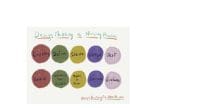How can physicians give patients the care and compassion they don’t receive themselves?
Every year 300-400 physicians commit suicide. In her poignant TEDMED talk Dr. Pamela Wible discusses her book, “Physician Suicide Letters Answered” and implores her audience to realize that physician suicide is a public health crises. For every female physician suicide, Wible documented seven male suicides. In her study of 757 physician suicides, she discovered that women prefer to overdose, and men chose firearms. Easy access to lethal medications is a risk factor for both. Depression and mental illness are the two greatest risk factors causing 90% of suicides.
As humans we learn through mimicry. Medical students are assimilated into a culture where ‘The doctor who can perform the most surgeries on the fewest hours of sleep without eating or a bathroom break is revered’. New medical students battle stiff competition to enter a profession because of a passion to help others, and instead, find themselves joining a club of self-abuse which is the antithesis of their dreams. The result? One study found that 20% of residents met the criteria for depression, and 74% met the criteria for burnout leading to the 150 resident suicides we see a year.
Physicians are held (by themselves and others) to extremely high standards of performance. Errors can lead to drastic consequences. Residents with depression were 6.2 times more likely to make a medication error. As the pace of medicine (and reimbursement) intensify, so does the gap between expectations and reality causing extreme moral distress and depression. Physicians as well as nurses have been asked to do more with less every day in the current system and the stress is taking its toll.
Our physician colleagues are depressed, burned out, and dying.
Now that you know, what can you commit to doing today? Choose an intervention. Save a life.
References
Kalaichandran A. Suicide among physicians is a public health crisis. HuffPost. March 25, 2017. huffingtonpost.ca/amitha-kalaichandran/physician-suicide_b_8665388.html.
Kalmoe MC, Chapman MB, Gold JA, Giedinghagen AM. Physician suicide: A call to action. Mo Med. 2019;116(3):211-16.
Now Matters Now. nowmattersnow.org.
Physician Suicide and SupportIdentify At-Risk Physicians and Facilitate Access to Appropriate Care. Professional Well-being | AMA STEPS Forward | AMA Ed Hub. https://edhub.ama-assn.org/steps-forward/module/2702599#section-201978553.
Wible P. Why doctors kill themselves. TedMed. March 23, 2016. youtube.com/watch?v=qyVAtZ9VZ4Q.


All of her books come from her passion to understand the stories of nurses. Her books, “Ending Nurse to Nurse Hostility” and “Speak Your Truth” illuminate our relationships with our peers and physician partners. She is also co-author of “The Dauntless Nurse” which was written as a communication confidence builder.
Kathleen is also a guest Op Ed writer to the Seattle Times and has been interviewed twice on NPR’s “People’s Pharmacy”. Her Tedx Talk calls for changing our belief system from a hierarchy to equality in order to keep our patients safe – and also explains how disaster thrust her into ‘the best profession ever’.
You can also find more information about Kathleen on her website, Twitter, and Facebook.


















